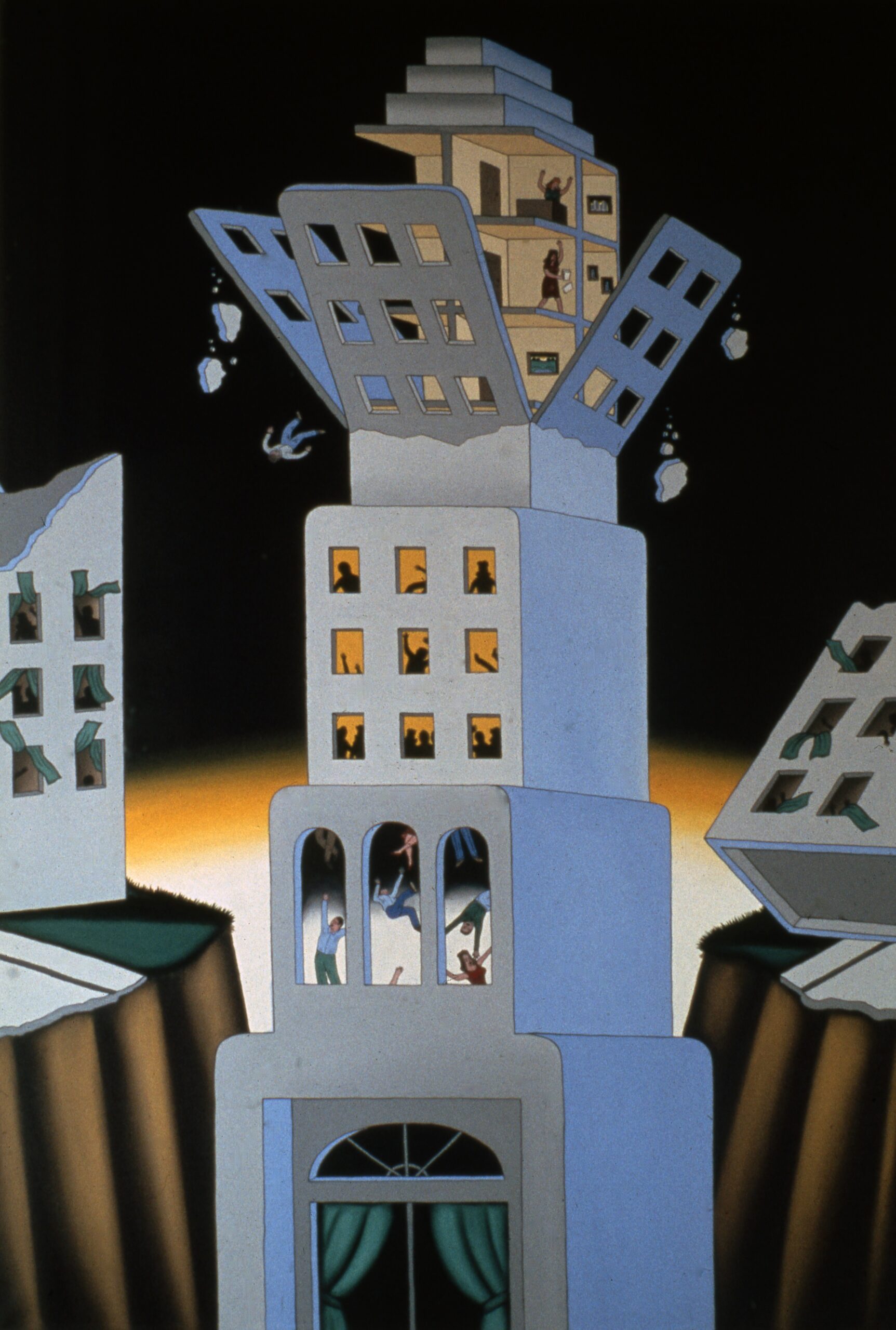Chicago—The Terra Foundation for American Art announced the acquisition of The Big Jolt (1972) by Chicago Imagist Roger Brown (1941–1997). The painting is an example of Brown’s career-long exploration of natural disasters and their effect on people and nature. The work was acquired in response to a desire to collect works of art by Chicago artists, a plan that began with Art Design Chicago—the 2018 Terra Foundation-initiated citywide celebration of the city’s art and design legacy.
“A focal point of the Art Design Chicago initiative was to more firmly establish for audiences Chicago art and design in the broader conversation of American art and design,” said Elizabeth Glassman, Terra Foundation president and CEO. “Adding works by major Chicago artists like Roger Brown to the foundation’s collection, and featuring them in our Terra Collection Initiative exhibition projects with partners around the world, showcases Chicago art and artists to audiences internationally.”
Born in Hamilton, Alabama, Brown received BFA and MFA degrees from the School of the Art Institute of Chicago (SAIC), where he studied with Chicago artist Ray Yoshida. Brown established a studio in the city and became a leading member of the Chicago Imagists, a group of artists associated with SAIC whose works were exhibited together from the mid-1960s to the early 1970s. Their work was often inspired by popular culture and everyday life and depicted personal experiences with vibrancy and irreverence.
Brown’s work is influenced by a variety of sources, including religion, folk art, art deco design, surrealism, medieval Italian painting, and commercial advertising. His acclaimed 1972 “Disasters” series—of which The Big Jolt is a part—included canvases depicting skyscrapers and city buildings affected by various calamities, such as fire, explosions, avalanches, and hurricanes. With a black sky and yellow horizon line, and an equally cataclysmic and mechanical portrayal of chaos, the work showcases major stylistic and thematic qualities of Brown’s “Disasters” series. One of eight canvases depicting a similar scene, the skyscraper in The Big Jolt crumbles while its inhabitants tumble within and fall away into the abyss below.
“Throughout its history, the Terra Foundation Collection has continually evolved,” said Peter John Brownlee, Terra Foundation curator. “The recent acquisition of major twentieth-century paintings reflects an effort to expand the collection’s post–1945 holdings, which increases opportunities to use the collection in interesting, meaningful ways. Our desire is to maintain a collection that contributes to current conversations in the field and, thus, best advances the foundation’s global mission.”
The Terra Foundation’s other two most recent acquisitions—fellow Chicago Imagist Ed Paschke’s Top Cat Boy (1970) and Beauford Delaney’s Untitled (Village Street Scene) (1948)—were also collected with a focus on building the post-1945 collection.
Paschke (1939–2004) was a Chicago artist who studied at SAIC. Exposed to pop art in New York, he began to use commercial imagery as source material and often manipulated images using projectors to compose his works. Drawing from experiences at nightclubs in Chicago and New York, he made their subculture the subjects of his pop-informed imagery. The large-scale Top Cat Boy bears the trademarks of Paschke’s 1970s output, composed with vivid, neon colors and an ambiguous narrative where the fluidity of racial and gendered identifies play out in a backdrop of theatrical entertainment.
Delaney (1901–1979) was born in Knoxville, Tennessee, studied in Boston, and moved to New York City to set up a studio in Greenwich Village, which became the focus of his work between 1940 and 1952, including Untitled (Village Street Scene). The painting expresses the hallmarks of the spirited, energetic style of his figural work and cityscapes. In 1953, Delaney, feeling out of place as a gay African American man in New York, moved to Paris, where his work tended toward colorful abstraction that retained traces of his earlier style.
The Terra Foundation Collection comprises 767 paintings, works on paper, and sculptures dating from the late eighteenth century to the mid-twentieth century by artists such as John Singleton Copley, James McNeill Whistler, Mary Cassatt, Winslow Homer, Georgia O’Keeffe, and Edward Hopper.
The foundation works to ensure its collection is accessible, organizing Terra Collection Initiative exhibitions with partner institutions worldwide, lending pieces to exhibitions around the world, and maintaining an online collection database. A rotating group of approximately 30 paintings are on view in the American galleries of the Art Institute of Chicago. Since 2005, approximately 90 percent of the foundation’s collection of paintings has been exhibited in national and international museums.
For high-resolution images, please contact [email protected].


